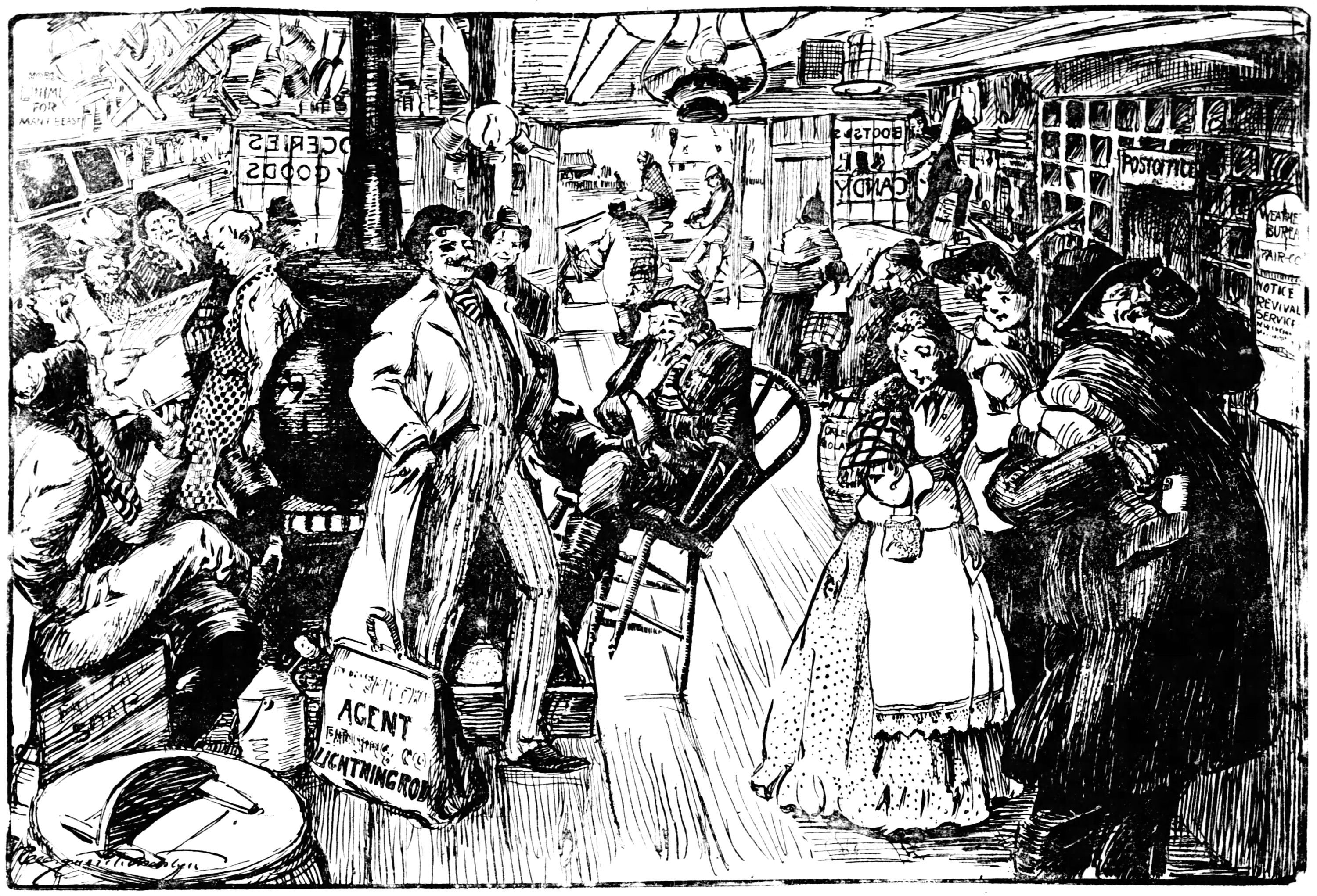|
Teataja (Stockholm)
''Teataja'' (The Herald) was an Estonian-language newspaper published in Stockholm, Sweden, from 1944 to 2002. The newspaper was established in October 1944. Initially, the newspaper was published by the Estonian Committee–Association of Estonian Organizations in Sweden, and later by an commercial association created for this purpose. In its editorials, ''Teataja'' was presented as a voice for politics, culture, society, and youth issues. From 1945 to 1953, the newspaper was called ''Eesti Teataja''. The newspaper was initially published once a week, later twice a week and then once a month, and in its last years twice a month. Editors *1944–1953: Bernhard Ingel *1945–1953: Oskar Mänd *1949–1953, 1960–1970: Adelaida Lemberg *1953–1954: Ilmar Talve *1954, 1971–1995, 2000–2002: Aksel Mark *1954–1956: *1956–2000: *1957–1958: Tõnis Kint *1958–1960: Raimond Kolk *1958–1970: Aleksander Warma Aleksander Warma VR I/3 (also Varma; – 23 December 19 ... [...More Info...] [...Related Items...] OR: [Wikipedia] [Google] [Baidu] |
Estonian Language
Estonian ( ) is a Finnic language and the official language of Estonia. It is written in the Latin script and is the first language of the majority of the country's population; it is also an official language of the European Union. Estonian is spoken natively by about 1.1 million people: 922,000 people in Estonia and 160,000 elsewhere. Classification By Convention (norm), conventions of historical linguistics, Estonian is classified as a part of the Finnic languages, Finnic (a.k.a. Baltic Finnic) branch of the Uralic languages, Uralic (a.k.a. Uralian, or Finno-Ugric languages, Finno-Ugric) language family. Other Finnic languages include Finnish language, Finnish and several endangered languages spoken around the Baltic Sea and in northwestern Russia. Estonian is typically subclassified as a Southern Finnic language, and it is the second-most-spoken language among all the Finnic languages. Alongside Finnish, Hungarian language, Hungarian and Maltese language, Maltese, Estonian is ... [...More Info...] [...Related Items...] OR: [Wikipedia] [Google] [Baidu] |
Arvo Horm
Arvo Horm (until 1935 Arnold Horn, October 8, 1913 – April 15, 1996) was an Estonian politician, economist, and journalist. Early life and education Arvo Horm was born Arnold Horn at Vastseliina Manor, the son of Peeter Horn (later Horm, 1874–1946) and Amalie (Maali) Horn (née Liiv, 1879–1954). He studied economics at the University of Tartu from 1934 to 1938 and graduated cum laude. He was a member of the . He escaped to Sweden via Finland in 1943. Career Horm served as the minister of economic affairs from March 1, 1963, to August 24, 1977, in the Estonian government-in-exile, after which he served as minister without portfolio. He was a member of the board of the , and he was the editor of the newspaper '' Teataja'' from 1971 to 1996. He was elected to the in 1966, 1968, and 1970. In 1967, the newspaper ''Komsomolskaya Pravda ''Komsomolskaya Pravda'' (; ) is a daily Russian tabloid newspaper that was founded in 1925. Its name is in reference to the official Sov ... [...More Info...] [...Related Items...] OR: [Wikipedia] [Google] [Baidu] |
Newspapers Published In Stockholm
A newspaper is a periodical publication containing written information about current events and is often typed in black ink with a white or gray background. Newspapers can cover a wide variety of fields such as politics, business, sports, art, and science. They often include materials such as opinion columns, weather forecasts, reviews of local services, obituaries, birth notices, crosswords, editorial cartoons, comic strips, and advice columns. Most newspapers are businesses, and they pay their expenses with a mixture of subscription revenue, newsstand sales, and advertising revenue. The journalism organizations that publish newspapers are themselves often metonymically called newspapers. Newspapers have traditionally been published in print (usually on cheap, low-grade paper called newsprint). However, today most newspapers are also published on websites as online newspapers, and some have even abandoned their print versions entirely. Newspapers developed in the 17th centu ... [...More Info...] [...Related Items...] OR: [Wikipedia] [Google] [Baidu] |
Defunct Newspapers Published In Sweden
{{Disambiguation ...
Defunct may refer to: * ''Defunct'' (video game), 2014 * Zombie process or defunct process, in Unix-like operating systems See also * * :Former entities * End-of-life product * Obsolescence Obsolescence is the process of becoming antiquated, out of date, old-fashioned, no longer in general use, or no longer useful, or the condition of being in such a state. When used in a biological sense, it means imperfect or rudimentary when comp ... [...More Info...] [...Related Items...] OR: [Wikipedia] [Google] [Baidu] |
1944 Establishments In Sweden
Events Below, the events of World War II have the "WWII" prefix. January * January 2 – WWII: ** Free France, Free French General Jean de Lattre de Tassigny is appointed to command First Army (France), French Army B, part of the Sixth United States Army Group in North Africa. ** Landing at Saidor: 13,000 US and Australian troops land on Papua New Guinea in an attempt to cut off a Japanese retreat. * January 8 – WWII: Philippine Commonwealth troops enter the province of Ilocos Sur in northern Luzon and attack Japanese forces. * January 11 ** United States President Franklin D. Roosevelt proposes a Second Bill of Rights for social and economic security, in his State of the Union address. ** The Nazi German administration expands Kraków-Płaszów concentration camp into the larger standalone ''Konzentrationslager Plaszow bei Krakau'' in occupied Poland. * January 12 – WWII: Winston Churchill and Charles de Gaulle begin a 2-day conference in Marrakech. * Janua ... [...More Info...] [...Related Items...] OR: [Wikipedia] [Google] [Baidu] |
Newspapers Disestablished In 2002
A newspaper is a Periodical literature, periodical publication containing written News, information about current events and is often typed in black ink with a white or gray background. Newspapers can cover a wide variety of fields such as politics, business, sports, art, and science. They often include materials such as opinion columns, weather forecasts, reviews of local services, Obituary, obituaries, birth notices, crosswords, editorial cartoons, comic strips, and advice columns. Most newspapers are businesses, and they pay their expenses with a mixture of Subscription business model, subscription revenue, Newsagent's shop, newsstand sales, and advertising revenue. The journalism organizations that publish newspapers are themselves often Metonymy, metonymically called newspapers. Newspapers have traditionally been published Printing, in print (usually on cheap, low-grade paper called newsprint). However, today most newspapers are also Electronic publishing, published on webs ... [...More Info...] [...Related Items...] OR: [Wikipedia] [Google] [Baidu] |
Newspapers Established In 1944
A newspaper is a periodical publication containing written information about current events and is often typed in black ink with a white or gray background. Newspapers can cover a wide variety of fields such as politics, business, sports, art, and science. They often include materials such as opinion columns, weather forecasts, reviews of local services, obituaries, birth notices, crosswords, editorial cartoons, comic strips, and advice columns. Most newspapers are businesses, and they pay their expenses with a mixture of subscription revenue, newsstand sales, and advertising revenue. The journalism organizations that publish newspapers are themselves often metonymically called newspapers. Newspapers have traditionally been published in print (usually on cheap, low-grade paper called newsprint). However, today most newspapers are also published on websites as online newspapers, and some have even abandoned their print versions entirely. Newspapers developed in the 17th centu ... [...More Info...] [...Related Items...] OR: [Wikipedia] [Google] [Baidu] |
Aleksander Warma
Aleksander Warma VR I/3 (also Varma; – 23 December 1970) was an Estonian navy officer, diplomat, and painter. Biography Aleksander Warma studied at marine schools in Käsmu and Narva, and he took a deep sea captain's exam in Riga. In 1920, he took the high school exams for the examination committee of the Tallinn Teachers' Training College. From 1920 to 1924, he studied at the Department of Law of Tartu University, graduating with a 1st-degree diploma. He received a master's degree in law in 1928. He was a member of the Estonian Students' Society. In World War I, he served in the Russian Baltic fleet. During the Estonian War of Independence, he served in the Estonian Navy, and he was chief of staff of the navy from 1919 to 1920. After the war, he commanded the navy ship . From 1924 to 1926, he was assistant to the jurisconsult of the Ministry of War. In 1926, Warma retired as a lieutenant commander. From 1926 to 1927, Warma was the director of the legal bureau of the Min ... [...More Info...] [...Related Items...] OR: [Wikipedia] [Google] [Baidu] |
Stockholm
Stockholm (; ) is the Capital city, capital and List of urban areas in Sweden by population, most populous city of Sweden, as well as the List of urban areas in the Nordic countries, largest urban area in the Nordic countries. Approximately 1 million people live in the Stockholm Municipality, municipality, with 1.6 million in the Stockholm urban area, urban area, and 2.5 million in the Metropolitan Stockholm, metropolitan area. The city stretches across fourteen islands where Mälaren, Lake Mälaren flows into the Baltic Sea. Outside the city to the east, and along the coast, is the island chain of the Stockholm archipelago. The area has been settled since the Stone Age, in the 6th millennium BC, and was founded as a city in 1252 by Swedish statesman Birger Jarl. The city serves as the county seat of Stockholm County. Stockholm is the cultural, media, political, and economic centre of Sweden. The Stockholm region alone accounts for over a third of the country's Gros ... [...More Info...] [...Related Items...] OR: [Wikipedia] [Google] [Baidu] |
Raimond Kolk
Raimond Kolk (8 February 1924 in Saru Parish, Võru County – 3 November 1992 in Stockholm) was an Estonian writer and critic. From 1942 to 1943, Kolk studied at the Teachers' Seminary of the University of Tartu. In 1944, he fled to Finland because of German mobilization. In 1944, he moved to Sweden. From 1958 to 1963, Kolk studied at Stockholm University, taking courses in political science, national economy and statistics. In 1963, he graduated from the university as a candidate in philosophy. From 1972 to 1989, he worked as the economic director of the Swedish Food Administration in Uppsala Uppsala ( ; ; archaically spelled ''Upsala'') is the capital of Uppsala County and the List of urban areas in Sweden by population, fourth-largest city in Sweden, after Stockholm, Gothenburg, and Malmö. It had 177,074 inhabitants in 2019. Loc .... While in exile, Kolk collaborated with several Estonian publications in exile; examples include the political journal ''Radikaaldemokraat' ... [...More Info...] [...Related Items...] OR: [Wikipedia] [Google] [Baidu] |





